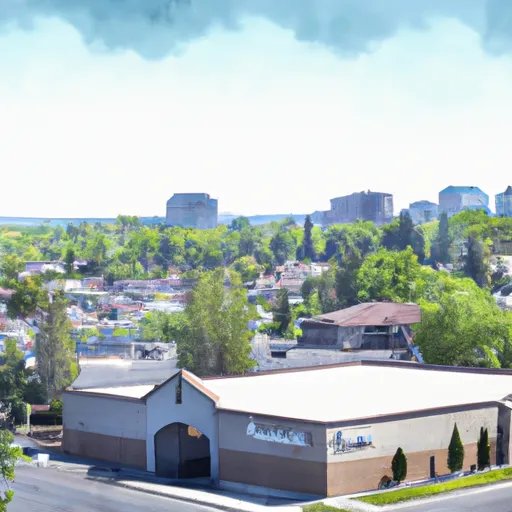-
 Snoflo Premium
Snoflo Premium
Get unlimited access to all our content
With no Ad interruptions! - Start Your Free Trial Login with existing account
Roseville
Eden Index
Climate
9.5
•
Recreation
5.4
•
Community
4.6
•
Safeguard
6.8/10

Roseville, California is a vibrant city located in Placer County, nestled in the Sacramento Valley. Known for its pleasant Mediterranean climate, with hot summers and mild winters, Roseville experiences an average annual temperature of around 62°F. Summers are dry and hot, with temperatures often exceeding 90°F, while winters are mild, with temperatures rarely dropping below 40°F.
Hydrologically, Roseville benefits from the close proximity of the American River, which provides a reliable water source for the city. The Folsom Dam, situated nearby, regulates the river's flow, ensuring water availability throughout the year. This hydrological advantage contributes to Roseville's lush green spaces and beautiful parks.
Speaking of outdoor recreation, Roseville offers a myriad of opportunities to enjoy the pleasant climate and stunning surroundings. The city boasts numerous parks, such as the expansive Maidu Regional Park, where visitors can engage in activities like hiking, picnicking, and playing sports. For water enthusiasts, Folsom Lake and Lake Natoma are nearby, offering opportunities for boating, fishing, and swimming. Additionally, Roseville is home to several golf courses, providing avid golfers with well-maintained fairways and challenging holes.
Overall, Roseville's Mediterranean climate, water resources, and diverse outdoor recreational offerings make it an attractive destination for those seeking an active and enjoyable lifestyle.
What is the Eden Index?
The Snoflo Eden Index serves as a comprehensive rating system for regions, evaluating their desirability through a holistic assessment of climate health, outdoor recreation opportunities, and natural disaster risk, acknowledging the profound impact of these factors on livability and well-being.
Climate Health Indicator (CHI): 9.5
Roseville receives approximately
606mm of rain per year,
with humidity levels near 78%
and air temperatures averaging around
17°C.
Roseville has a plant hardyness factor of
9, meaning
plants and agriculture in this region tend to thrive here all year round.
By considering the ideal temperature range, reliable water supplies, clean air, and stable seasonal rain or snowpacks, the Climate Health Indicator (CHI) underscores the significance of a healthy climate as the foundation for quality living.
A healthy climate is paramount for ensuring a high quality of life and livability in a region, fostering both physical well-being and environmental harmony. This can be characterized by ideal temperatures, reliable access to water supplies, clean air, and consistent seasonal rain or snowpacks.
Weather Forecast
Streamflow Conditions
Lower Sacramento
Area Rivers
Lower Sacramento
Snowpack Depths
Lower Sacramento
Reservoir Storage Capacity
Lower Sacramento
Groundwater Levels
Recreational Opportunity Index (ROI): 5.4
The Recreational Opportunity Index (ROI) recognizes the value of outdoor recreational options, such as parks, hiking trails, camping sites, and fishing spots, while acknowledging that climate plays a pivotal role in ensuring the comfort and consistency of these experiences.
Access to outdoor recreational opportunities, encompassing activities such as parks, hiking, camping, and fishing, is crucial for overall well-being, and the climate plays a pivotal role in enabling and enhancing these experiences, ensuring that individuals can engage in nature-based activities comfortably and consistently.
Camping Areas
| Campground | Campsites | Reservations | Toilets | Showers | Elevation |
|---|---|---|---|---|---|
| Beale AFB Military | None | 155 ft | |||
| Peninsula - Folsom Lake State Rec Area | 100 | 792 ft | |||
| Beals Point - Folsom Lake State Rec Area | 69 | 486 ft | |||
| Placer County Fair RV | None | 163 ft | |||
| Cal Expo RV Park | None | 26 ft | |||
| Rancho Seco Rec Area | None | 252 ft |
Nearby Ski Areas
Catastrophe Safeguard Index (CSI):
The Catastrophe Safeguard Index (CSI) recognizes that natural disaster risk, encompassing floods, fires, hurricanes, and tornadoes, can drastically affect safety and the overall appeal of an area.
The level of natural disaster risk in a region significantly affects safety and the overall livability, with climate change amplifying these risks by potentially increasing the frequency and intensity of events like floods, fires, hurricanes, and tornadoes, thereby posing substantial challenges to community resilience and well-being.
Community Resilience Indicator (CRI): 4.6
The Community Resilience Indicator (CRI) recognizes that education, healthcare, and socioeconomics are crucial to the well-being of a region. The CRI acknowledges the profound impact of these elements on residents' overall quality of life. By evaluating educational resources, healthcare accessibility, and economic inclusivity, the index captures the essential aspects that contribute to a thriving community, fostering resident satisfaction, equity, and social cohesion.

